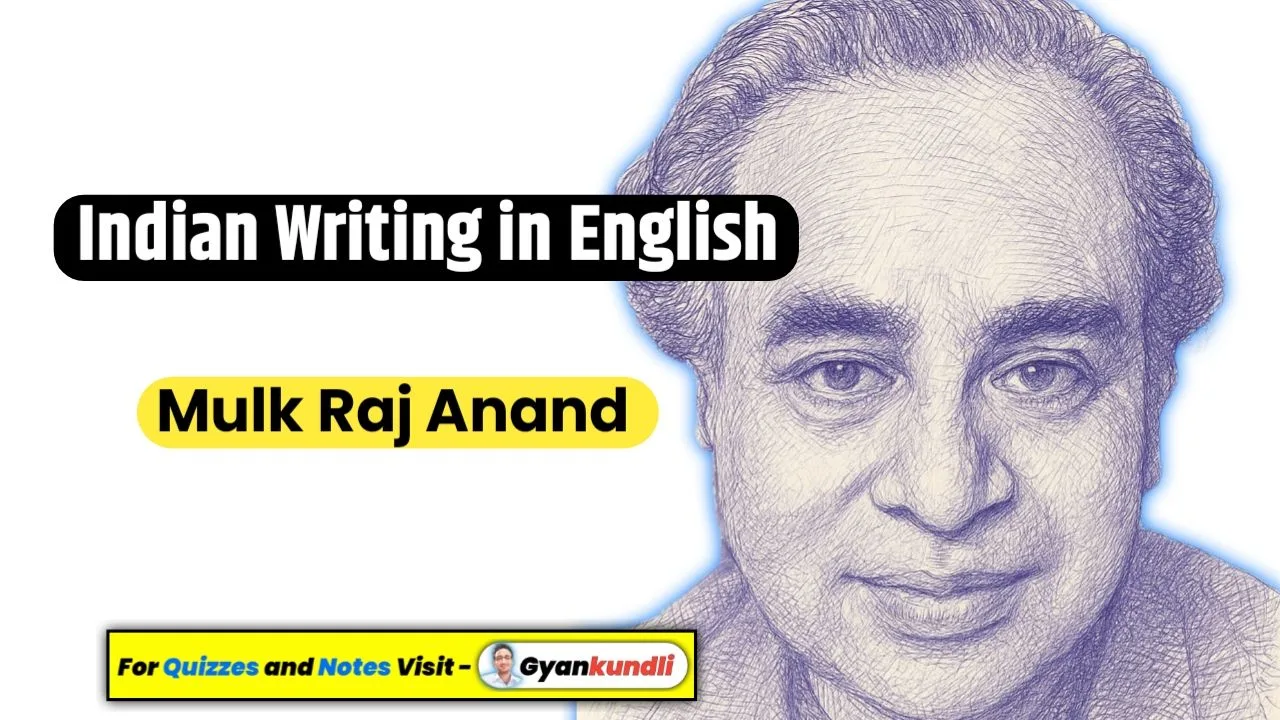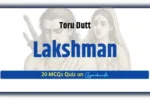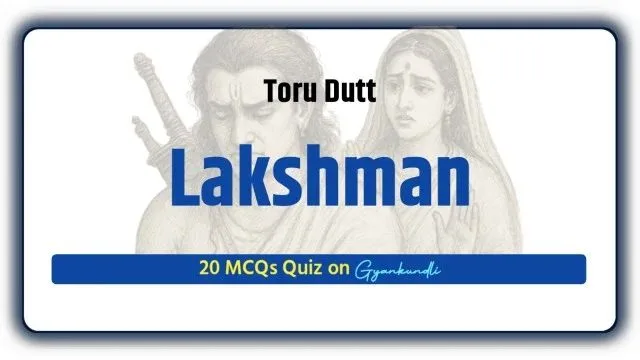Introduction to Mulk Raj Anand
Mulk Raj Anand (1905–2004) stands as a towering figure in Indian Writing in English, celebrated for his vivid portrayal of social injustices in colonial India. As one of the “Big Three” of Indo-Anglian fiction, alongside R.K. Narayan and Raja Rao, Anand redefined the Indian novel by addressing themes of caste oppression, poverty, and exploitation. For RPSC 2nd Grade English aspirants, understanding Anand’s contributions is crucial, as his works frequently appear in the syllabus due to their literary and socio-historical significance.
This blog post highlights Anand’s life, major works, recurring themes, and their relevance to your exam preparation.
Mulk Raj Anand : Early Life and Influences
Born on December 12, 1905, in Peshawar (now in Pakistan), Mulk Raj Anand grew up in a middle-class Kshatriya family. His father, Lal Chand, a coppersmith-turned-soldier, instilled in him resourcefulness, while his mother, Ishwar Kaur, a peasant woman, nurtured his imagination with folk tales and mythological stories. These early influences shaped Anand’s empathy for the marginalized, a hallmark of his literary career.
Anand’s childhood was marked by poverty and personal loss, including the death of his cousin Kaushalya, which led him to question religious and social norms. His education at Khalsa College, Amritsar, and later at Punjab University, honed his intellectual curiosity. A scholarship to London allowed him to pursue a Ph.D. in Philosophy, exposing him to Western thought and literary circles, including figures like T.S. Eliot and E.M. Forster.
Mulk Raj Anand : Literary Career and Major Works
Anand’s decision to pursue creative writing over teaching was pivotal. His works, written in English, captured the socio-political realities of British India, making him a pioneer in Indo-Anglian fiction. Below is an overview of his major works:
1. Untouchable (1935)
Anand’s debut novel, Untouchable, is a groundbreaking exploration of caste oppression. The protagonist, Bakha, a toilet cleaner, faces daily humiliation due to his “untouchable” status. The novel’s raw depiction of social injustice shocked readers accustomed to heroic protagonists, cementing Anand’s reputation as a social realist.
Key Themes: Caste discrimination, human dignity, social reform.
2. Coolie (1936)
Coolie narrates the tragic life of Munoo, a young boy uprooted from rural life to work in urban settings. The novel critiques the exploitation of the working class and explores tensions between rural and urban India, Hindus and Muslims, and the British colonizers and Indian subjects.
Key Themes: Class struggle, urbanization, colonial exploitation.
3. The Village (1939)
Part of Anand’s trilogy (The Village, Across the Black Waters, The Sword and the Sickle), this novel follows Lalu, a peasant, as he navigates societal constraints. It highlights the feudal system’s grip on rural India.
Key Themes: Feudalism, rural life, resistance.
4. The Big Heart (1945)
Set in a coppersmith community, The Big Heart portrays the conflict between tradition and modernity. The protagonist, Ananta, represents the struggle of artisans against mechanization.
Key Themes: Tradition vs. modernity, labor rights.
5. Seven Ages of Man (Autobiographical Series)
Anand’s ambitious seven-volume autobiographical project, Seven Ages of Man, includes Seven Summers (1951), Morning Face (1968), Confession of a Lover (1976), and The Bubble (1984). These works offer insights into his personal and philosophical evolution.
Key Themes: Self-discovery, social critique, existentialism.
Other Contributions
Beyond novels, Anand wrote short stories, essays, and non-fiction works like Persian Painting and The Hindu View of Art. He founded MARG, an art quarterly, in 1946, and edited numerous journals, showcasing his multifaceted literary engagement.
Major Works of Mulk Raj Anand
| Title | Year | Genre | Key Themes / Description |
|---|---|---|---|
| Untouchable | 1935 | Novel | Caste discrimination, social injustice, and the plight of the “untouchables.” |
| Coolie | 1936 | Novel | Explores poverty, human suffering, and economic exploitation beyond caste/religion. |
| The Village | 1939 | Novel (Trilogy Part 1) | Rural India, tradition vs. modernity, and colonial oppression. |
| Across the Black Waters | 1940 | Novel (Trilogy Part 2) | Indian soldiers in World War I, disillusionment and colonial contradictions. |
| The Sword and the Sickle | 1942 | Novel (Trilogy Part 3) | Rise of communism and Indian independence movement. |
| The Big Heart | 1945 | Novel | Working-class life, caste pride, and industrial change in a traditional society. |
| Seven Summers | 1951 | Autobiographical Novel | Part of Seven Ages of Man, childhood recollections and early emotional development. |
| Morning Face | 1968 | Autobiographical Novel | Won Sahitya Akademi Award; reflects personal and national awakening during independence. |
| Confession of a Lover | 1976 | Autobiographical Novel | Romantic and intellectual evolution of the protagonist. |
| The Bubble | 1984 | Autobiographical Novel | Philosophical introspection and confrontation with mortality. |
| MARG (Magazine) | 1946– | Art Quarterly (Editor) | Promoted Indian art, culture, architecture, and heritage post-independence. |
Themes in Mulk Raj Anand’s Works
Anand’s novels are a mirror to the socio-cultural landscape of colonial India. His recurring themes resonate with RPSC 2nd Grade English aspirants, as they align with the syllabus’s focus on Indian Writing in English. Key themes include:
1. Caste and Class Oppression
Anand’s empathy for the downtrodden is evident in novels like Untouchable and Coolie. He exposes the brutality of caste hierarchies and class exploitation, advocating for social equality.
2. Colonialism and East-West Encounter
Anand critiques British colonialism while exploring cultural interactions between East and West. His London education and friendships with Western intellectuals informed this perspective.
3. Poverty and Exploitation
Poverty is a central concern in Anand’s works, depicted through characters like Munoo and Bakha. He highlights the systemic forces perpetuating economic inequality.
4. Religious Hypocrisy and Superstition
Anand’s atheist worldview, shaped by personal loss, led him to critique religious hypocrisy and superstitions that reinforce social injustices.
5. Women’s Place in Society
Anand portrays women as victims of patriarchal norms, though his female characters often exhibit resilience. This theme is subtle but significant in his works.
Anand’s Literary Style and Techniques
Anand’s writing style is characterized by realism, vivid imagery, and a conversational tone. His use of English, infused with Indian idioms and sensibilities, creates an authentic Indo-Anglian voice. Key stylistic features include:
- Realism: Anand’s detailed descriptions of settings and characters ground his narratives in reality.
- Symbolism: Objects like the sickle (The Sword and the Sickle) symbolize resistance and labor.
- Narrative Structure: His novels often follow a linear, episodic structure, reflecting the protagonist’s journey.
- Language: Anand blends English with Indian colloquialisms, making his works accessible yet culturally rich.
Awards and Recognition
Anand’s contributions earned him numerous accolades, including:
- International Peace Prize (1953): For promoting peace through literature.
- Padma Bhushan (1968): India’s third-highest civilian honor.
- Sahitya Akademi Award (1971): For Morning Face.
His novels have been translated into multiple languages, reflecting their global appeal. Anand’s legacy as a social reformer and literary innovator endures.
Conclusion
Mulk Raj Anand’s legacy as a pioneer of Indian Writing in English is undeniable. His unflinching portrayal of social injustices, combined with his innovative use of English, makes him a vital study for literature students.
External Resources for Further Study
- Sahitya Akademi: For insights into Anand’s award-winning works.
- The Hindu: Search for articles on Anand’s literary contributions.
- JSTOR: Access scholarly articles on Indo-Anglian fiction.
Read this also : Rabindranath Tagore: A Pillar of Indian Writing in English
Discover more from Gyankundli
Subscribe to get the latest posts sent to your email.















1 thought on “Mulk Raj Anand : Indian Writing in English for RPSC 2nd Grade English”